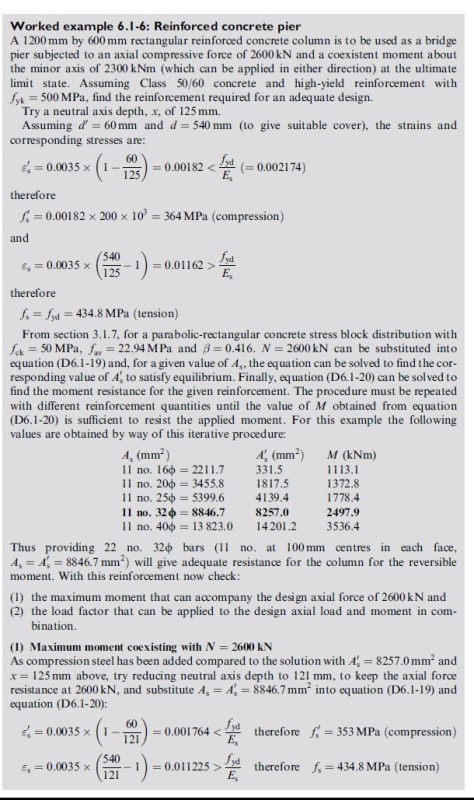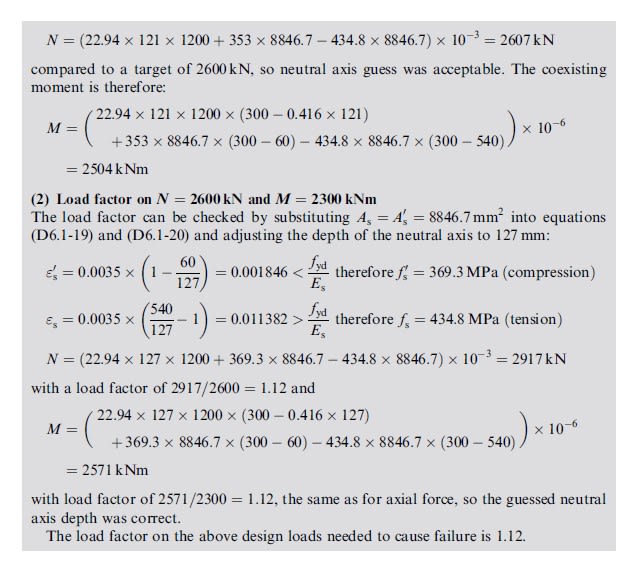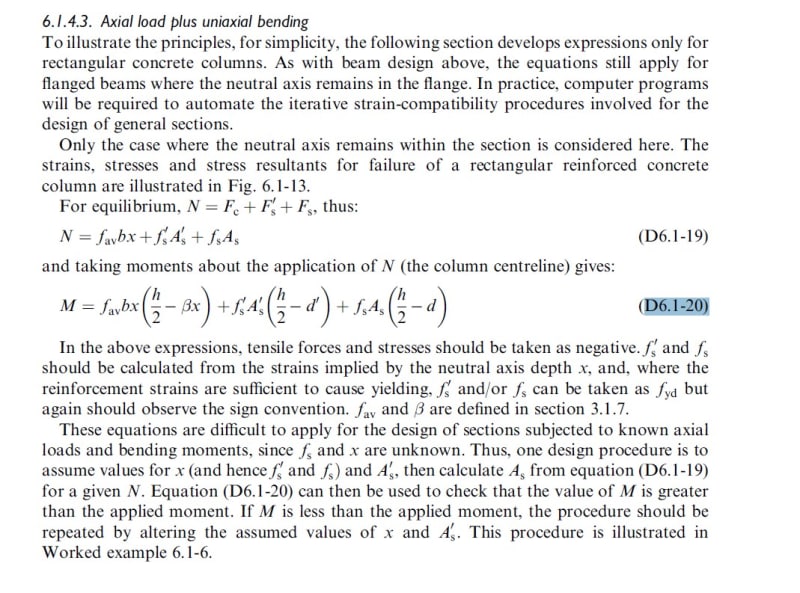Quick background on my problem. I'm strengthening a doubly reinforced concrete column subject to combined axial and bending forces using FRP. I have calculated the phiPn and phi Mn necessary to create my P-M Interaction diagram. I need to check that the concrete stress at service load is less than 0.6f'c. I know what the service load is, and the ACI 440 FRP guideline provides a recommended equation for calculating fc. But to use this calculation, I need to determine epsilon,c, or the strain in the concrete at service loads.
Don't know if I'm over thinking this or what, but I can't seem to figure how I would go about doing this. I presume I somehow need to calculate the neutral axis location and then use similar triangles to get concrete strain from the reinforcing steel strain, but I can't for the life of me figure out how to do this or find any examples showing it. If someone could help me out I'd be very grateful. Thanks for any help you might be able to provide!
Don't know if I'm over thinking this or what, but I can't seem to figure how I would go about doing this. I presume I somehow need to calculate the neutral axis location and then use similar triangles to get concrete strain from the reinforcing steel strain, but I can't for the life of me figure out how to do this or find any examples showing it. If someone could help me out I'd be very grateful. Thanks for any help you might be able to provide!



